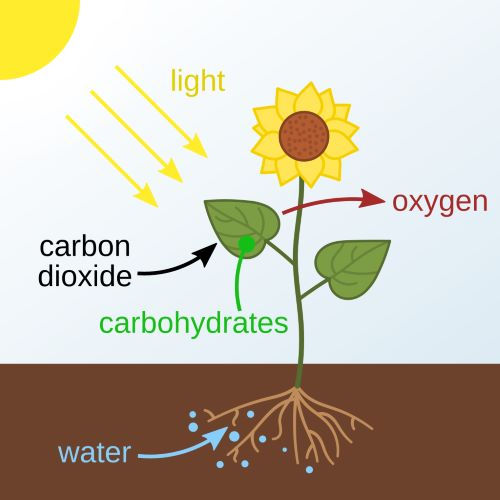Fatty Acids: Environment & Human Health
- Sylvia Rose

- Feb 13
- 5 min read
Fatty acids are compounds with strong functions in biological processes of the human body. Found in plants, microbes to the largest mammals, they can be saturated, having single carbon bonds, or unsaturated, with one or more double bonds.

About Fatty Acids
Fatty acids are long chains of carbon atoms with hydrogen atoms attached, often ending with a carboxyl group. Structural variations give them different functions and effects.
They're classified into three primary categories
saturated
monounsaturated
polyunsaturated

Each type has different physical and chemical properties that affect its role in biological systems.
Saturated Fatty Acids: These fatty acids contain no double bonds between carbon atoms and are typically solid at room temperature. Common examples include stearic acid, found in animal fat, and palmitic acid, prevalent in palm oil.
Monounsaturated Fatty Acids: These fatty acids contain one double bond and are generally liquid at room temperature. Oleic acid, found in olive oil, is a well-known monounsaturated fatty acid.
Polyunsaturated Fatty Acids: These consist of multiple double bonds. They are further divided into omega-3 and omega-6 fatty acids.

Fatty acids like alpha-linolenic acid (ALA) are found in fatty fish and flaxseeds. Flaxseeds also have cyanogenic glycosides, which release hydrogen cyanide when the seeds are crushed and in contact with water.
Potential risk of these compounds is the reason medical opinion wavers about the amount of raw flaxseed one should consume, and how. Linoleic acid is found in some vegetable oils.

Fatty acid chains vary in length from 4 to 28 carbon atoms. Saturated fatty acids are typically solid at room temperature, like butter, while unsaturated fatty acids are often liquid, like olive oil.
While the human body synthesizes most fatty acids, some are obtained only from the diet. These the essential fatty acids, primarily linoleic acid (Omega 6) and alpha-linolenic acid (Omega 3).
The term "omega" in omega-3 and omega-6 refers to the position of the first double bond in the fatty acid chain.

How Fatty Acids Are Created
Fatty acids are synthesized by living organisms through various metabolic pathways. In animals, synthesis occurs mainly in the liver and adipose or fat tissue.
In plants they're made during photosynthesis. Fatty acids synthesize in chloroplasts during photosynthesis as sunlight is converted into chemical energy.

The energy helps create fatty acids from simpler molecules like glycerol and acetyl-CoA. Derived from proteins, fats & carbohydrates, acetyl-CoA undergoes a series of biochemical reactions. These elongate the carbon chain and introduce double bonds.
Fatty acid production occurs in cells of mushrooms, other fungi and single-celled organisms. Microbes can produce fatty acids through fermentation processes. Some bacteria convert sugars into fatty acids.

Fatty Acids in Nature
Fatty acids are important to ecosystems. In plants, they are integral components of cell membranes, helping maintain structural integrity and fluidity. In animals, fatty acids are crucial for energy storage, thermal insulation, and the formation of cell membranes.
Fatty acids have efficient signaling ability. Fatty acids like arachidonic acid are precursors to eicosanoids or hormone-like substances regulating anti-inflammatory and immune responses.

Plants contain various types of fatty acids, especially in their seeds and fruit, used for energy storage. Linoleic acid comes from from sunflower, safflower, and corn oil.
Microbes also produce a variety of fatty acids. Some strains of bacteria in the gastrointestinal (GI) tract generate short-chain fatty acids like butyrate through fermentation of dietary fibers. These provide energy for colon cells.
In animals, fatty acids are present both in free form and as part of complex lipids. Omega-3 and omega-6 fatty acids from fish and plant oils support brain function and heart health.

Purpose of Fatty Acids in Human Bodies
Energy Storage: They are the most efficient way to store energy in the body. Excess calories are converted into triglycerides, which are then stored in adipose tissue as a readily available energy reserve.
Cell Membrane Structure: Fatty acids are major components of cell membranes, providing structure and flexibility. The type of fatty acids in the membrane influences its fluidity, necessary for cell signaling and other functions.

Hormone Production: Certain fatty acids, particularly omega-3 and omega-6 fatty acids, are precursors to the hormone-like substances eicosanoids. These compounds regulate inflammation, blood clotting, and other vital processes.
Nutrient Absorption: Fatty acids aid in the absorption of fat-soluble vitamins (A, D, E, and K) from the diet, and hormone production.
Insulation and Protection: Fatty acids stored in adipose tissue provide insulation against cold temperatures and cushion vital organs, protecting them from damage.

Fatty Acids in the Environment
Energy Source for Microorganisms: Fatty acids are a primary food source for many microorganisms in soil and aquatic environments. Their breakdown fuels microbial activity, which is essential for nutrient cycling and decomposition.
Marine Food Webs: Marine organisms, from phytoplankton to whales, synthesize and utilize fatty acids. These fatty acids affect marine food webs, transferring energy from primary producers to higher trophic levels.

Soil Health: Fatty acids contribute to soil structure and fertility. They help bind soil particles together, improving water retention and aeration.
Bioremediation: Certain microorganisms can use fatty acids to break down pollutants in the environment in bioremediation to clean up contaminated sites.

Indicators of Environmental Stress: Changes in the fatty acid composition of organisms can be used as indicators of environmental stress, such as pollution or climate change.
Fatty acids can be found in the form of free fatty acids (FFAs) circulating in the bloodstream or bound to glycerol as triglycerides, the primary form of stored fat in the body.
Certain forms of saturated fat, such as stearic acid, a long chain fatty acid, may not have the same harmful effects on cardiovascular health as others due to specific metabolic properties.

Non-Fiction Books:
Fiction Books:
READ: Lora Ley Adventures - Germanic Mythology Fiction Series
READ: Reiker For Hire - Victorian Detective Murder Mysteries


